What is Upright Row Exercise?
Looking to build upper back and shoulder muscles? Look no further than the upright row exercise, also known as standing rows. This exercise primarily targets the muscles present in your shoulder and upper back. It involves lifting a dumbbell or barbell or a cable attachment vertically from the hip level to just below your chin. However, it’s notorious for causing injuries if performed incorrectly.
Importance of Upright Rows
The upright row is an important exercise for shoulder workouts. Incorporating this exercise into your routine can enhance upper body strength and aesthetics. It is famous for building shoulder strength, well-rounded deltoid muscles, and upper-back muscle engagement. Proper form and technique are crucial to reduce the risk of injury. Consult a fitness professional or healthcare provider if you have shoulder concerns.
This article offers a comprehensive guide on safe upright row execution, including benefits, modifications, variations, common mistakes, and tips for maximizing results.

Upright Row exercise Muscles Worked
The movements involved in the upright row exercise target the upper back and shoulder muscles, playing a key role in developing strength and power. The targeted upright row muscles are:
- Upper Trapezius (narrower grip)
- Posterior Shoulder/Deltoids (wider grip)
- Anterior Shoulder/Deltoids (narrower grip)
- Biceps
- Rhomboids
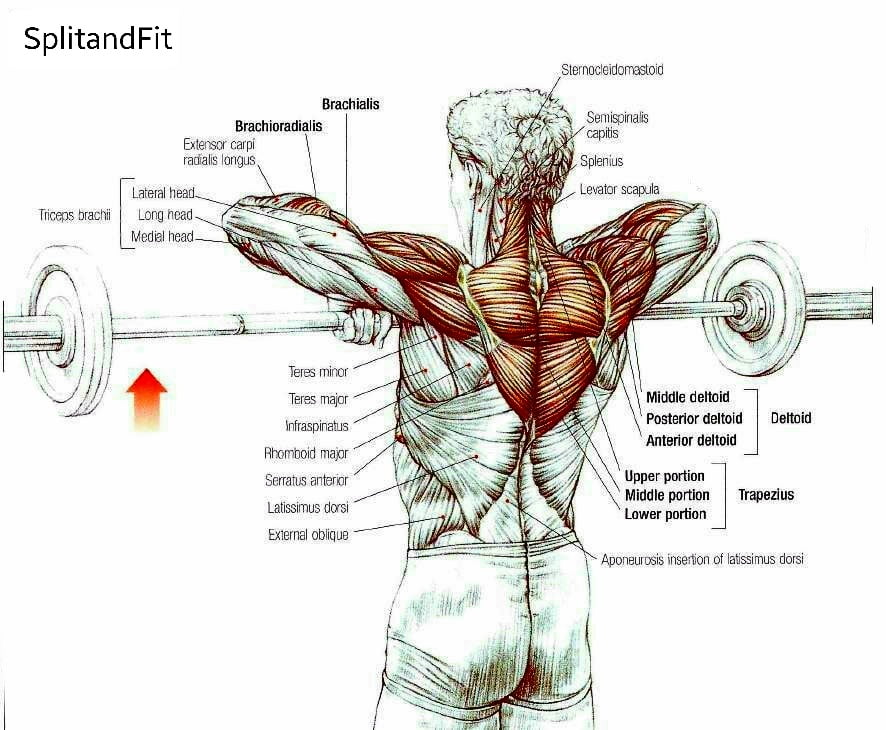
Benefits of Upright Rows
Upright holds a crucial role in strength training and fitness routines. This compound exercise majorly targets the shoulder, and back muscles, and offers many benefits.
Shoulder Development
This is the key exercise that helps in building the strength and size of the shoulder. It mainly engages the lateral or side deltoid muscles, contributing to well-defined and well-rounded shoulders.
Upper Back Strengthening
A stronger back can help to reduce and prevent discomfort and reduce the injury chances. This exercise helps to unlock the upper trapezius muscles, which ultimately leads to improved posture and overall upper back strength.
Exercise Versatility
Upright row can be performed via multiple equipment, such as dumbbells, barbells, and resistance bands, making it adaptable to various fitness levels and equipment adaptability.
Muscle Size & Strength
The upright row exercise is good for building the muscular size and strength of specifically targeted muscles; the anterior and lateral heads of the deltoids, trapezius, rhomboids, and even the bicep muscles. However, this is of special interest for bodybuilders, requiring perfect form and technique.
Bigger Traps
Stronger deadlifts, squats, and pressing, require developing bigger traps which can be achieved by doing narrow grip upright rows
How to do the Upright Row exercise?
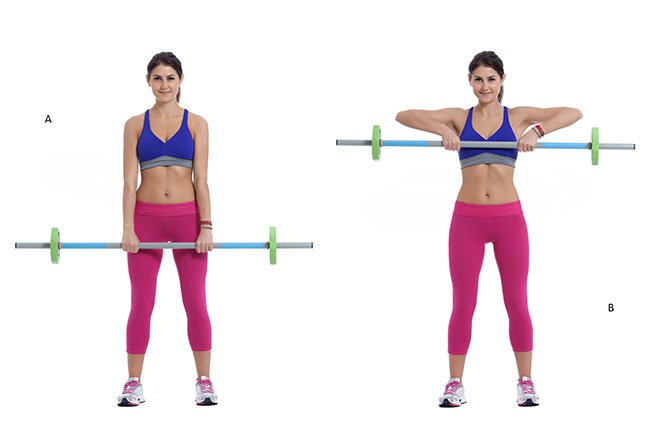
Perfect reinforcement of technique and position is crucial to achieve upright row form and to mitigate the risk of injury. Generally performed by fitness athletes and bodybuilders, upright row exercises are pulling exercises that can be performed as;
- Upright row with barbell
- Upright row with dumbbells
- Upright row kettlebell
- Upright row with cable row machine
If you’re interested in trying upright row exercise, using a barbell without any weight added, or light dumbbells, is the safest way to start. Be cautious of your body positioning, and your shoulder position in particular, and start slow. Well-muscled shoulders can be yours, and upright row exercises can help you achieve them if performed according to the step-by-step guide given below:
Step 1: Choosing Grip Width
- Select the grip width that suits your goals (wider for posterior shoulders, narrower for trapezius).
- Palms should face your body, about 3 inches outside shoulder width for balance.
Coach’s Tip: Start by taking a grip that is about 3 inches outside shoulder width (clean grip, or slightly wider), which allows you to get the best of both posterior shoulder and trapezius.
Step 2: Stand Tall
- Stand with the barbell at hip level, chest upright.
- Pull shoulders back and set shoulder blades down.
- Squeeze the barbell with knuckles pointing down and elbows slightly flared out.
Coach’s Tip: Once upright, squeeze the barbell so that the knuckles are pointed down towards the floor and the elbows are slightly flared out towards the sides (without allowing the shoulders to round forward). This will improve your ability to elevate the elbows upwards in the next step.
Step 3: Elbows Up
- Lift the barbell toward the chin, leading with elbows.
- Keep the barbell close to the body and breathe out during the effort.
- Arms should go no higher than parallel with the shoulders. Pause at the top.
- Ensure the barbell stays close to the body; elbows should stay above wrists and move upward.
Coach’s Tip: It doesn’t take a lot of weight to get the muscles going, so keep things light and control the entire range of motion. Once the bar reaches as high as you can go, pause slightly and then control the eccentric (lowering) aspect, and repeat.
Step 4: Returning to Starting Position
- Lower the barbell back to the starting position.
- Breathe in as you lower the barbell.
- Repeat the exercise for your desired number of repetitions.
Breathing Techniques
- Breathe out during the upward phase (lifting the barbell).
- Breathe in during the downward phase (lowering the barbell).
- It’s very important for optimal performance to keep the controlled and rhythmic breathing throughout the exercise
Common Mistakes in performing Upright rows:
To avoid strain or injury during the upright row exercise, refrain from making the following errors:
Wrist Position
Prefer a wide grip for the upright row to avoid wrist strains. Keep your wrists flexible during the lift, allowing them to flex as needed. Try to prevent the wrists from moving downwards or to the side during the lift.
Elbow Position
While lifting, ensure that your elbows are above the level of your forearms. Avoid raising your arms above parallel to prevent shoulder impingement.
Back & Torso
Keep your chest stationary and your abs braced throughout the lift—no turning or twisting. Maintain a straight back, with your chest up and your eyes focused ahead. Do not squat down and up after the initial position. There should be no movement in the legs.
Heavy Weight
Avoid lifting heavy weights with this exercise unless you are experienced and trust your shoulder joints. Excessive weight or poor form can lead to shoulder impingement.
Modifications & Variations of Upright Row
Upright row exercise can be modified to make it more accessible for beginners and to increase the effort needed as you build strength. To maximize upper back strength, hypertrophy, and performance, the knowledge of the upright row variations is important. Six such variations are stated below:
Upright Rows with Barbell/Narrow Upright Row
this exercise often done with a barbell, the narrow grip upright row is a vertical rowing variation often done to increase the involvement of the upper traps and back and to increase posterior shoulder strength and performance
- Stand with your feet shoulder-width apart.
- Grip a barbell with a narrow grip, hands slightly closer than shoulder-width.
- Keep the barbell close to your body as you lift it vertically towards your chin.
- Ensure your elbows remain higher than your forearms.
- Lower the barbell back down to the starting position.
- Perform the desired number of repetitions.
Upright Rows Wide Grip/Clean Grip
The clean grip upright row is a shoulder-width grip (or slightly wider) placement on the barbell that can be used to increase back, traps, posterior shoulder strength, and muscle mass
- Stand with your feet shoulder-width apart.
- Grip a barbell with a shoulder-width grip (or slightly wider).
- Lift the barbell vertically towards your chin while keeping it close to your body.
- Maintain elbow position above your forearms.
- Lower the barbell back to the starting position.
- Complete the desired number of reps.
Snatch Grip Upright Row/Clean High Pull
The snatch grip upright row is a wide grip variation, offering increased posterior shoulder and back involvement. The high pull involves greater lower body engagement to lift a load to the shoulders, similar to the upright row. It is used to enhance total body strength, pulling power, and positioning in snatch and clean extensions.
- Begin with a wide grip on the barbell.
- Bend your knees slightly and hinge at your hips to pick up the barbell from the ground or a low hang position.
- Lift the barbell vertically to shoulder height while maintaining the wide grip.
- Engage your lower body to provide power during the lift.
- Lower the barbell back to the starting position.
- This exercise is often used to improve total body strength and pulling power.
Cable or Band Upright Row/Face Pull
Bands and cable machines maintain muscle tension for increased activation and hypertrophy. The face pull, like the upright row, targets similar muscles, but differs by pulling horizontally or at a slight angle, varying the muscles worked.
- Attach a resistance band or cable handle to a low anchor point.
- Stand facing the anchor point with your feet hip-width apart.
- Hold the handle with your palms facing your body.
- Pull the handle vertically towards your chin, keeping your elbows high.
- Return to the starting position.
- The face pull involves pulling horizontally or at a slight angle, targeting different muscle groups.
Dumbbell Upright Row
The upright row with dumbbells is performed with a dumbbell held in each hand to increase unilateral strength, muscle mass, and movement coordination. Some lifters may have issues moving both loads in unison with precision, often suggesting movement asymmetries and/or muscular imbalances.
- Stand with your feet shoulder-width apart, holding a dumbbell in each hand.
- Lift the dumbbells vertically towards your chin, keeping them close to your body.
- Ensure both arms move in unison.
- Maintain proper form and elbow position.
- Lower the dumbbells to the starting position.
- This variation enhances unilateral strength and coordination.
Muscle Snatch
The muscle snatch is similar to the upright row and the high pull, however, it entails a lifter to take the load from the end of the high pull and continue to press it overhead. This exercise is a great moment for including both the pulling and pushing muscles into one powerful and muscle-building exercise.
- Begin with a wide grip on the barbell, similar to the snatch grip.
- Lift the barbell from the ground or low hang position to shoulder height.
- Continue by pressing the barbell overhead until your arms are fully extended.
- Lower the barbell back to the ground.
- The muscle snatch combines both pulling and pushing movements, working multiple muscle groups simultaneously.
Remember to use proper form, start with lighter weights, and progressively increase the resistance as you gain strength and confidence in each variation.
Safety and Precautions:
- Recommended against by the American College of Sports Medicine and National Federation of Professional Trainers for all fitness levels.
- If you decide to perform it, ensure proper coaching for perfect posture and form.
- Exercise caution when targeting shoulder muscles to prevent shoulder injuries.
- Avoid using heavy weights with this exercise.
- If pain or inflammation occurs, immediately stop the exercise.
Tips to Maximize the Results for Upright Row
Upright Row: Sets, Reps, and Programming
Strength – Reps and Sets
- For strength and application to other movements (e.g., high pulls)
- 4-6 sets of 3-8 repetitions are recommended.
- Avoid going below 1-3 repetitions with heavy loads to prevent form breakdown and potential injury (exception: heavy snatch high pulls for weightlifting).
- Rest period: 1 to 2 minutes
Hypertrophy – Reps and Sets
- For muscle hypertrophy
- Use 3-5 sets of 8-15 repetitions to induce muscular fatigue necessary for hypertrophy.
- Focus on muscle contractions and achieving a “pump” rather than simply lifting weights.
- Heavy loads are not necessary for effective results.
- Rest period: 1 minute
Frequency and Progression Strategies
- Train upright rows 2-3 times per week for most individuals.
- Gradually increase weight, reps, or sets to challenge your muscles over time.
Incorporating Upright Row into a Comprehensive Arm Training Routine
- Place upright rows in your arm workout routine.
- Combine with exercises for other arm muscles like biceps and triceps.
- Maintain proper form and technique.
Frequently Asked Question
Conclusion
The upright row is a valuable exercise that primarily targets the upper body muscles, including the shoulders, traps, and back. Including this exercise in your workout routine can improve shoulder stability, increase muscle size, and enhance overall upper body strength. If you have back problems, be sure to consult with a fitness professional and healthcare provider before adding this exercise to your fitness routine. With dedication and consistency, this exercise can make a significant contribution to your fitness journey and help you achieve your fitness goals.



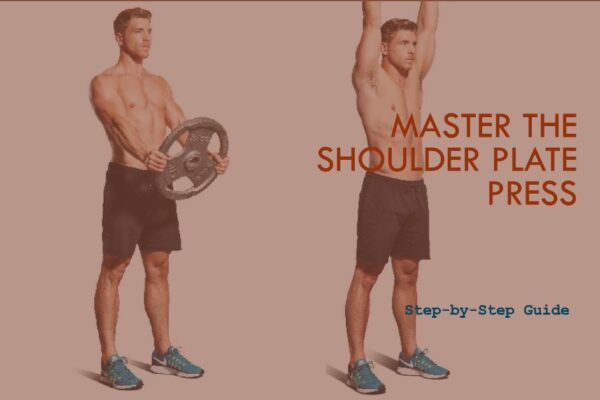
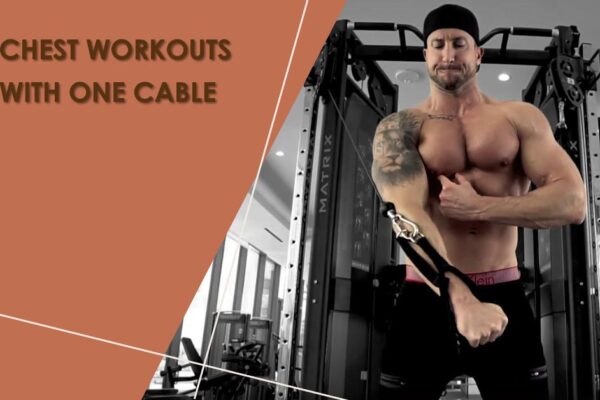
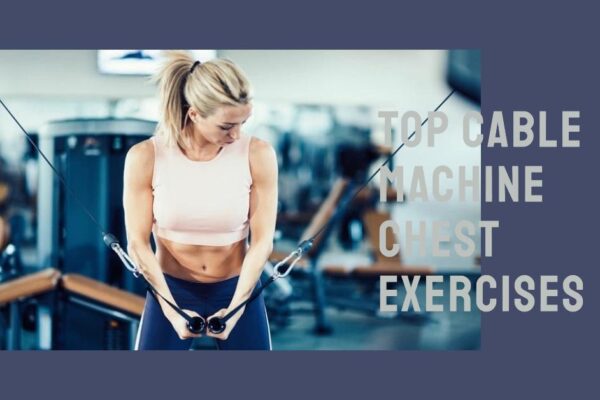
Leave a Reply